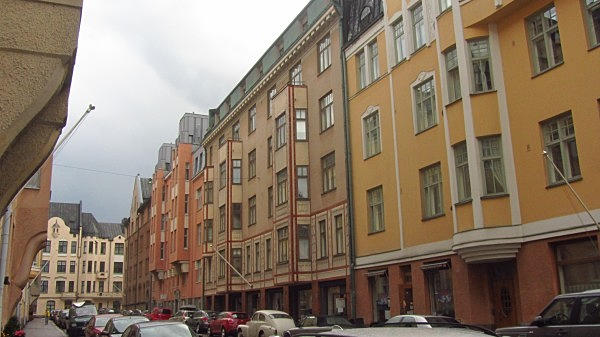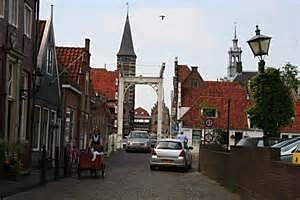September 9, 2015
Another interesting day in Tallinn, the capitol of Estonia. I visited the St. Nicholas’ Church, Niguliste kirik. It is famous for the Danse Macabre fragment, as seen below, which is about 1/3 of the original 30 meter (100′) work. It owes its theme to the Black Death that afflicted much of Europe. Unfortunately it is not easy to see, as it is protected by highly reflected glass or plastic.

Here’s the altar screen, also a fine piece:

Afterwards we visited the Occupations (Nazi and Soviet) Museums. There’s an excellent exhibit about the Nazi and Soviet Occupations, very well translated (as is the norm here) into English. The USSR got there first, pursuant to its pact with the Nazis dividing eastern Europe. Then came the Nazis, driving the Russians well back across the border, from Tallinn, the capital, just 210 kilometers away. Like the Finns the Estonians welcomed the Nazis at first, but many changed their minds. Others enlisted in the German armed services, on the side opposite to those who joined USSR forces. The Nazis murdered tens of thousands (not many were Jews from here), setting up 10 extermination camps. While at first some thought the Nazis would bring freedom, they were soon revealed to be another occupying power, exploiting Estonia for all they could in the interest of its war ambitions. Some Estonians fought the Russians on the latter’s way out, inflicting significant damages. The Nazis disarmed them once the Russians were gone. The Germans instituted the draft in 1942, eliminating most of the remaining support they had from the populace.
On September 22, 1944 the USSR retook Estonia, by which time 10% of the population had fled to the West. The transition from Soviet rule was rather complicated and taken in steps. I’ll leave you with a link to the Wiki entry on the subject: https://en.wikipedia.org/wiki/History_of_Estonia#Soviet_reoccupation_.281944-1991.29
Lunch was at the Boheme Cafe near our house. There were some interesting pastas on the menu but we stuck with more local fare. I had buckwheat with salmon and shrimp in a tomato basil sauce. I am not sure how local the sauce was. In any case the sauce over-powered the seafood and the buckwheat, which was in grain form. Peg got mushroom pancakes, not at all objectionable but not very interesting either. What was more interesting was the conversation with the waitresses and the tall slender blond sitting nearby. They tolds us English instruction starts in first grade if not sooner. All movies and tv shows are in English if they originate that way, and there are no subtitles. The system works, and it is the same in Holland, Finland, and I bet the rest of these northern countries. Think Abba. They were Swiss.
I’d picked up a local art scene paper. The young blond noted I was taking photos of some of the fashion shots and told us about the exhibit. We’ll go tomorrow.
This was among the friendlier moments we’ve had here. They do not smile much.































